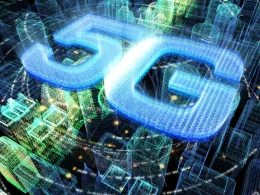Artificial intelligence and blockchain technology are two of the most powerful technologies of our time. These technologies have enabled incredible advances in many aspects of our lives, from healthcare to finance and beyond. Now, with the emergence of Web3, a new way to combine these two powerful forces has been created. Web3 is unlocking the power of decentralized artificial intelligence by combining the best elements of both blockchain and AI technology into one comprehensive platform. In this article, we will explore what Web3 is, how it works, and why it is set to revolutionize the world of data-driven AI applications.
What is Web3?
Web 3.0 is the third generation of the World Wide Web, and it has the potential to revolutionize the way we interact with the internet. With Web 3.0, we will be able to access a decentralized network of computers that can provide us with unprecedented levels of speed, security, and scalability. This new generation of the web will be powered by blockchain technology, which will allow for trustless and transparent transactions between parties.
What is Decentralized AI?
Decentralized AI is a term used to describe a type of AI that is not centrally controlled. Instead, it is distributed across a network of nodes, each of which has its own copy of the data set and algorithms. The benefits of decentralized AI include improved security, scalability, and fault tolerance.
How Does Web3 Work?
Web3 is the next generation of the internet, where users are in control of their own data and applications. Web3 is powered by decentralized technologies such as the blockchain and peer-to-peer networking.
With Web3, there is no need for central authorities or intermediaries. Users can interact directly with each other and with applications, without going through a third party. This enables new levels of trust, transparency, and security.
Web3 also brings the power of decentralization to artificial intelligence (AI). With AI running on a decentralized network, everyone can contribute to its development and growth. This could lead to breakthroughs in fields such as healthcare, finance, and education.
The Promise of Decentralized AI
The idea of decentralizing AI has been around for awhile, but it’s only recently that the technology has caught up to the vision. Decentralized AI promises to solve many of the problems that plague current centralized approaches, including data privacy, security, and trust.
With decentralized AI, data is not stored in a central location where it can be hacked or leaked. Instead, it is distributed across a network of computers, making it much more secure. Trust is also improved because there is no single point of failure. If one node goes down, the others can keep the network running.
Decentralized AI also offers many advantages when it comes to training and deploying models. Because data is distributed, training can happen at the edge, on devices like smartphones and sensors. This allows for real-time adaptation and personalization of models, something that is not possible with centralized AI approaches.
Overall, decentralized AI has the potential to revolutionize how we interact with artificial intelligence. By solving many of the challenges that currently limit AI’s impact, decentralized AI could unleash its true power and potential.
How to Use Web3
Web3 is the third generation of web technology that enables decentralized applications (dApps) to be built and run on the World Wide Web. dApps are powered by Ethereum smart contracts, which allow developers to create dApps that are completely trustless and tamper-proof.
In order to use web3, you need an Ethereum wallet that supports web3. We recommend MetaMask, which is a browser extension that allows you to securely interact with dApps without having to run a full Ethereum node.
Once you have installed MetaMask, you can access any dApp by visiting its URL in your browser. When you try to interacting with a dApp for the first time, MetaMask will prompt you to confirm the transaction. This is necessary in order to prevent fraudsters from being able to execute malicious code on your behalf.
After confirming the transaction, you will be able to use the dApp just like any other website or application. Remember that every time you interact with a dApp, you are actually interacting with a smart contract on the Ethereum blockchain. This means that all of your data is stored immutably on the blockchain, and can never be deleted or modified.
Conclusion
In conclusion, Web3 is a powerful platform that has the potential to revolutionize decentralized Artificial Intelligence. By leveraging blockchain technology and machine learning algorithms, Web3 can create autonomous systems that are more resilient and secure than existing centralized solutions. With its ability to securely store large amounts of data and provide powerful computing resources on-demand, Web3 is already setting new standards for AI development across all industries. We look forward to experiencing the amazing possibilities this revolutionary technology will bring in the near future!










